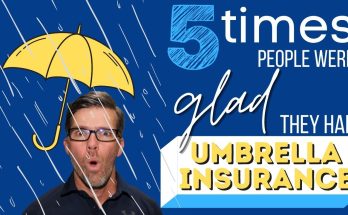In the world of business and personal finance, we are conditioned to seek value and efficiency. We meticulously analyze investments, negotiate contracts, and optimize spending to ensure every dollar is working for us. Yet, when it comes to insurance, many of us adopt a “set it and forget it” mentality. We accept our renewal premiums as a fixed cost of living, overlooking the significant opportunities for savings that lie just beneath the surface. Lowering your insurance premiums is not about recklessly slashing your coverage; it’s about engaging in smart, strategic management of your policies to ensure you are paying a fair price for the precise protection you need.
One of the most direct and effective tools at your disposal for managing premiums is the policy deductible. The deductible is the amount of money you agree to pay out-of-pocket on a claim before your insurance coverage begins to pay. There is a fundamental and inverse relationship between your deductible and your premium: a higher deductible will almost always result in a lower premium. By choosing to take on a slightly larger portion of the initial risk, you can achieve significant savings on your regular payments. For instance, increasing your auto insurance deductible from $250 to $1,000 could reduce your collision and comprehensive coverage costs by a substantial margin. This requires a careful self-assessment—you must be comfortable with your ability to cover the higher deductible from savings should an incident occur. For those with a healthy emergency fund, this strategy represents a calculated decision to self-insure for smaller events while keeping comprehensive protection against a major, catastrophic loss.
Another powerful strategy is to consolidate your insurance needs with a single provider. Insurers highly value customer loyalty and the efficiency of managing multiple policies for one client. As a result, they almost universally offer significant discounts for “bundling” different types of insurance, such as your home and auto policies. The savings from such a bundle can often be far greater than any discount you could find by cherry-picking individual policies from different companies. This approach not only lowers your overall premium costs but also simplifies your financial life, streamlining payments and renewals with a single point of contact. If your policies are currently scattered across various carriers, initiating a conversation about bundling could be one of the most profitable calls you make all year.
Complacency is the enemy of savings, and this is especially true in the insurance industry. Premiums and coverage options can vary dramatically from one carrier to another, as each company uses its own proprietary algorithms to assess risk. This is why it is absolutely essential to periodically shop around and compare quotes. This doesn’t mean you must switch providers every year, but obtaining competitive quotes at least every two years, or whenever you have a major life change, ensures that your current insurer remains competitive. An independent insurance agent can be an invaluable partner in this process. Unlike a captive agent who works for a single company, an independent agent can solicit quotes from multiple carriers on your behalf, allowing you to compare options efficiently and find the best combination of coverage and price for your specific circumstances.
Beyond these broad strategies, you should proactively inquire about the full spectrum of available discounts, many of which are not automatically applied. Insurers offer a wide array of price reductions for which you may already qualify. These can include discounts for having safety and security features in your home or car, such as a monitored alarm system or anti-lock brakes. There are often discounts for maintaining a good driving record, for being a member of certain professional associations or alumni groups, or for completing a defensive driving course. Even something as simple as opting for paperless billing or paying your premium in full upfront rather than in monthly installments can often unlock additional savings. It is always worth having a detailed conversation with your agent to exhaust every possible discount.
Ultimately, the most enduring way to lower your insurance premiums is to become a better risk in the eyes of the insurer. Your claims history and, in many regions, your credit score, are primary factors in determining your rates. By maintaining a clean driving record, preventing claims by properly maintaining your property, and managing your credit responsibly, you are actively improving your risk profile. This positions you as a desirable client and will lead to more favorable premiums over the long term. By combining this conscientious approach with smart policy management, you can take firm control of your insurance costs, ensuring your financial safety net is both strong and cost-effective.




